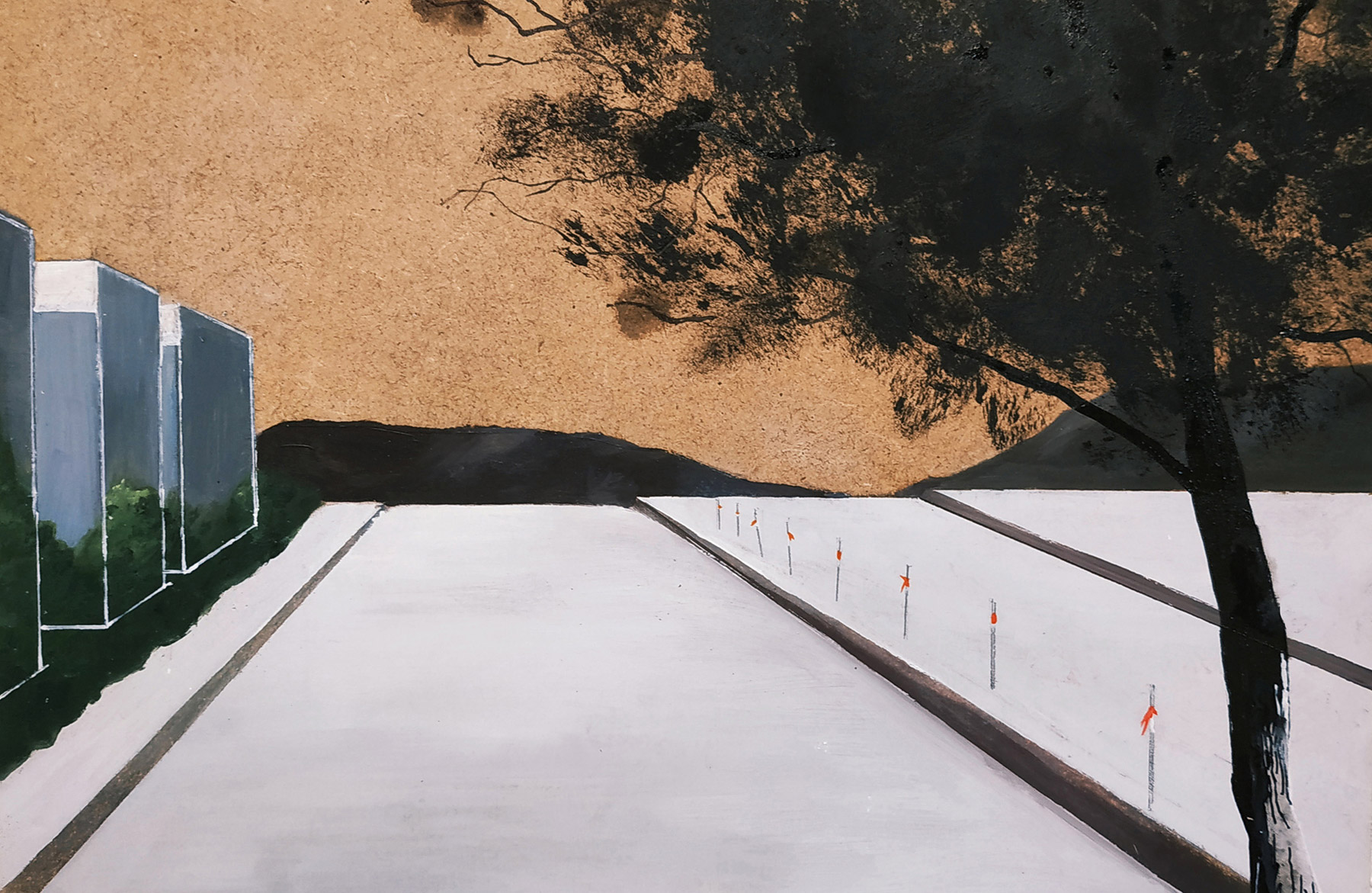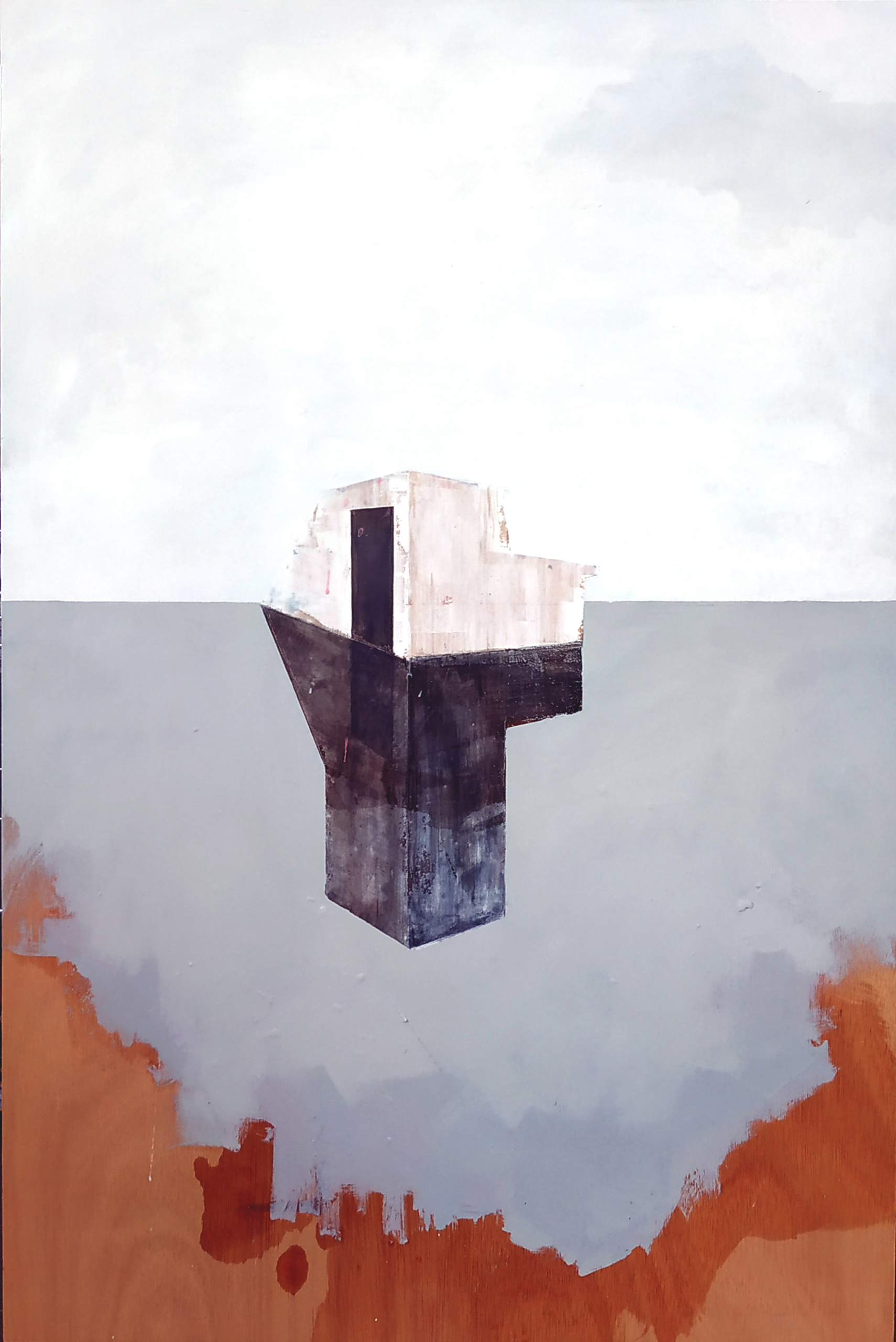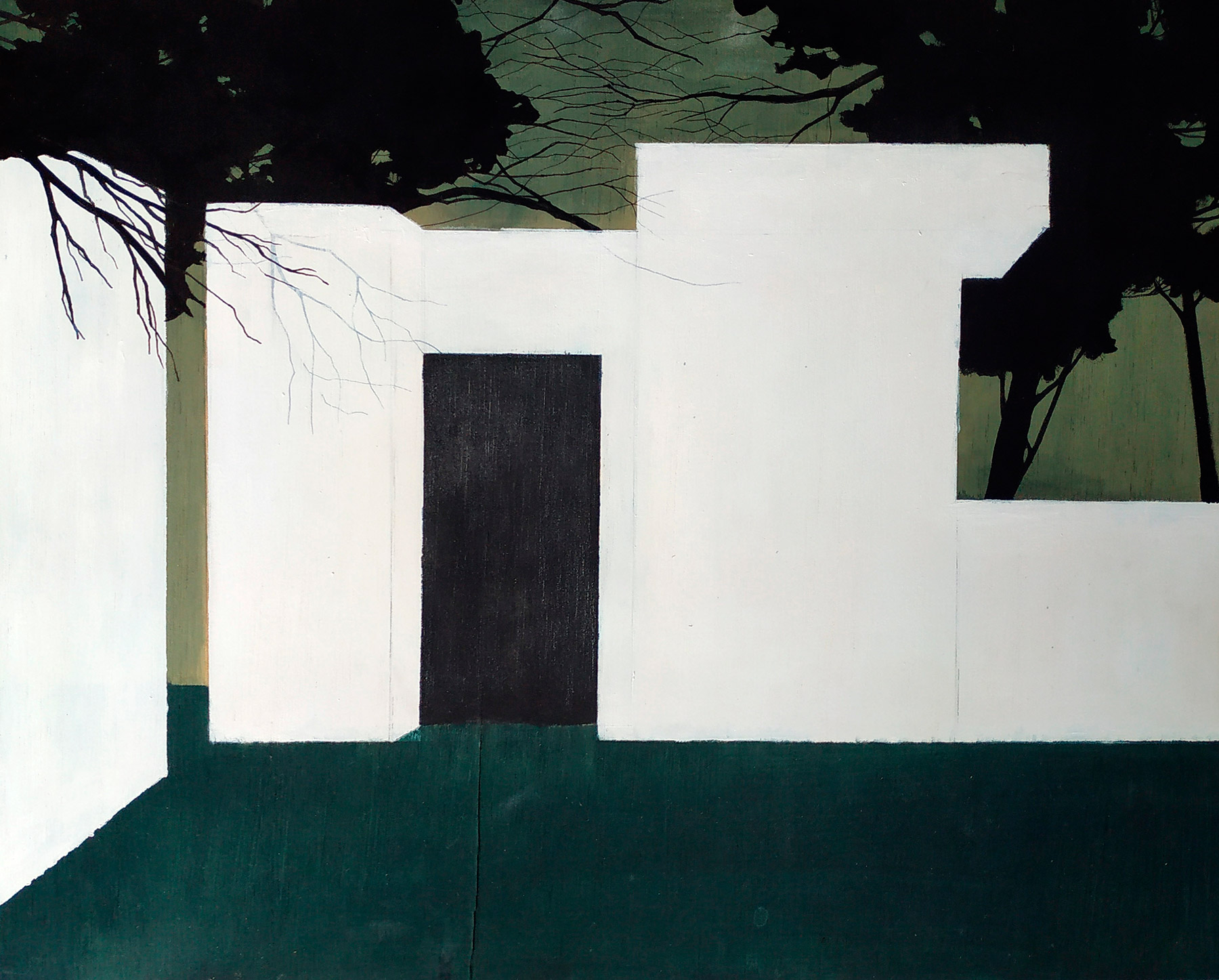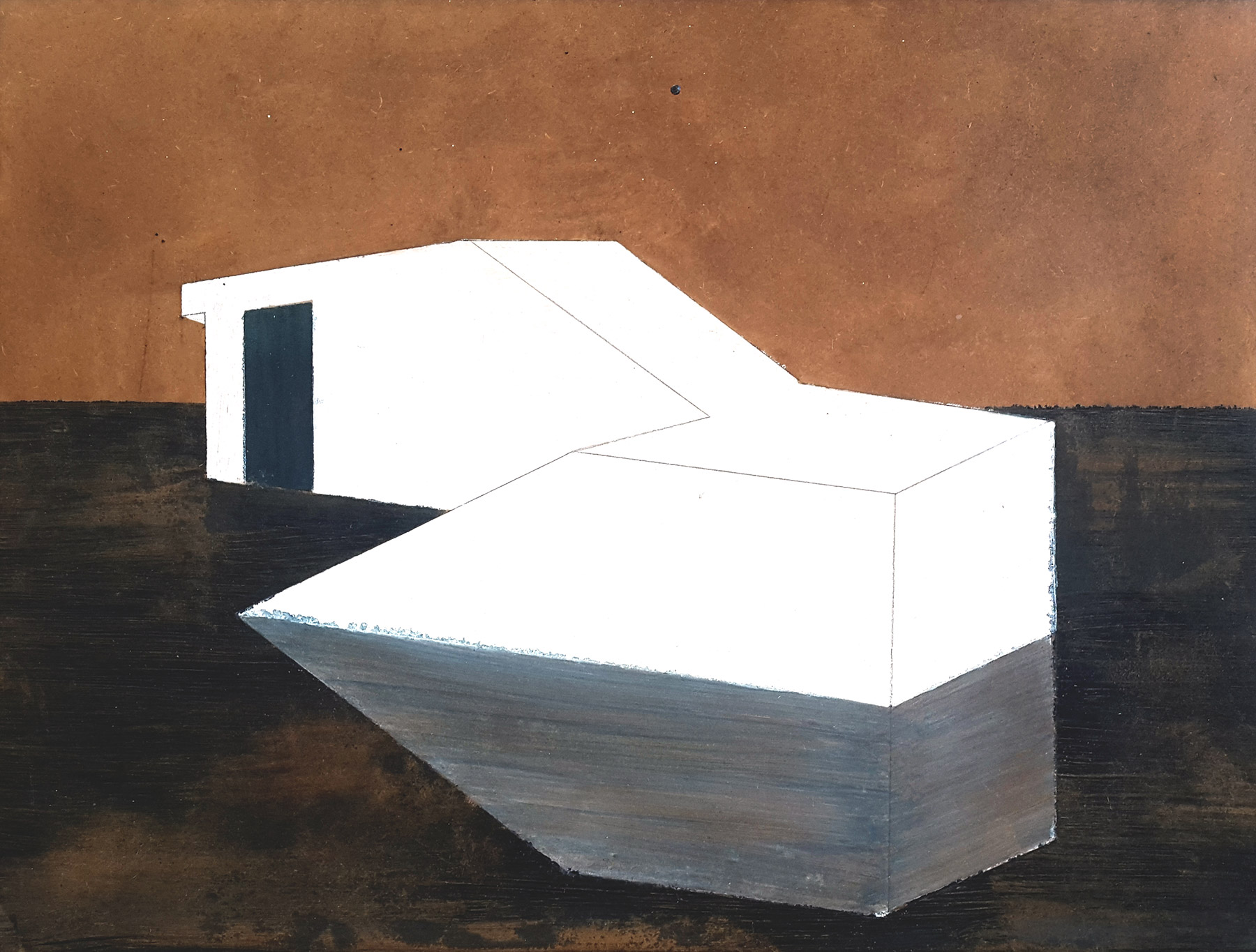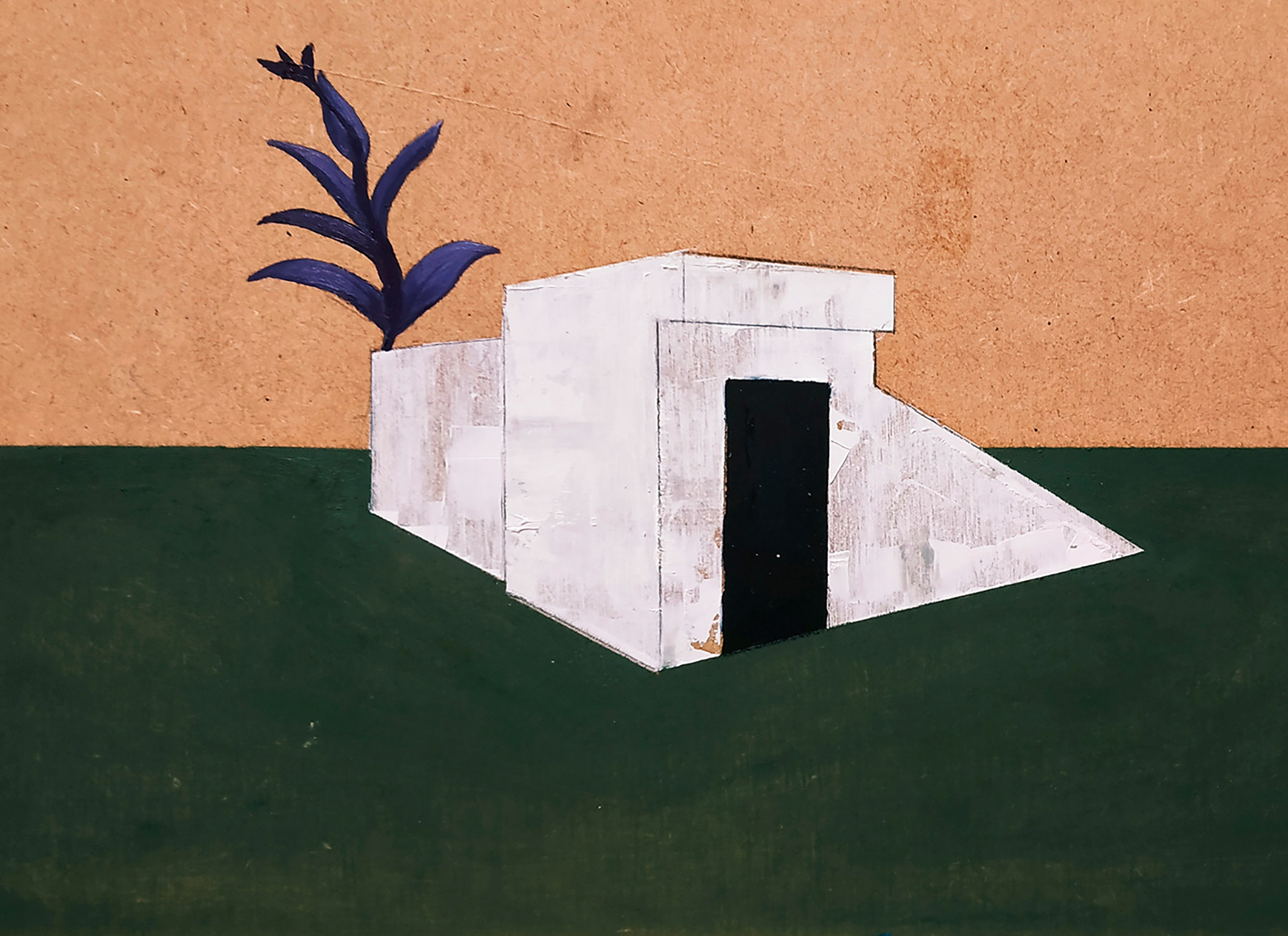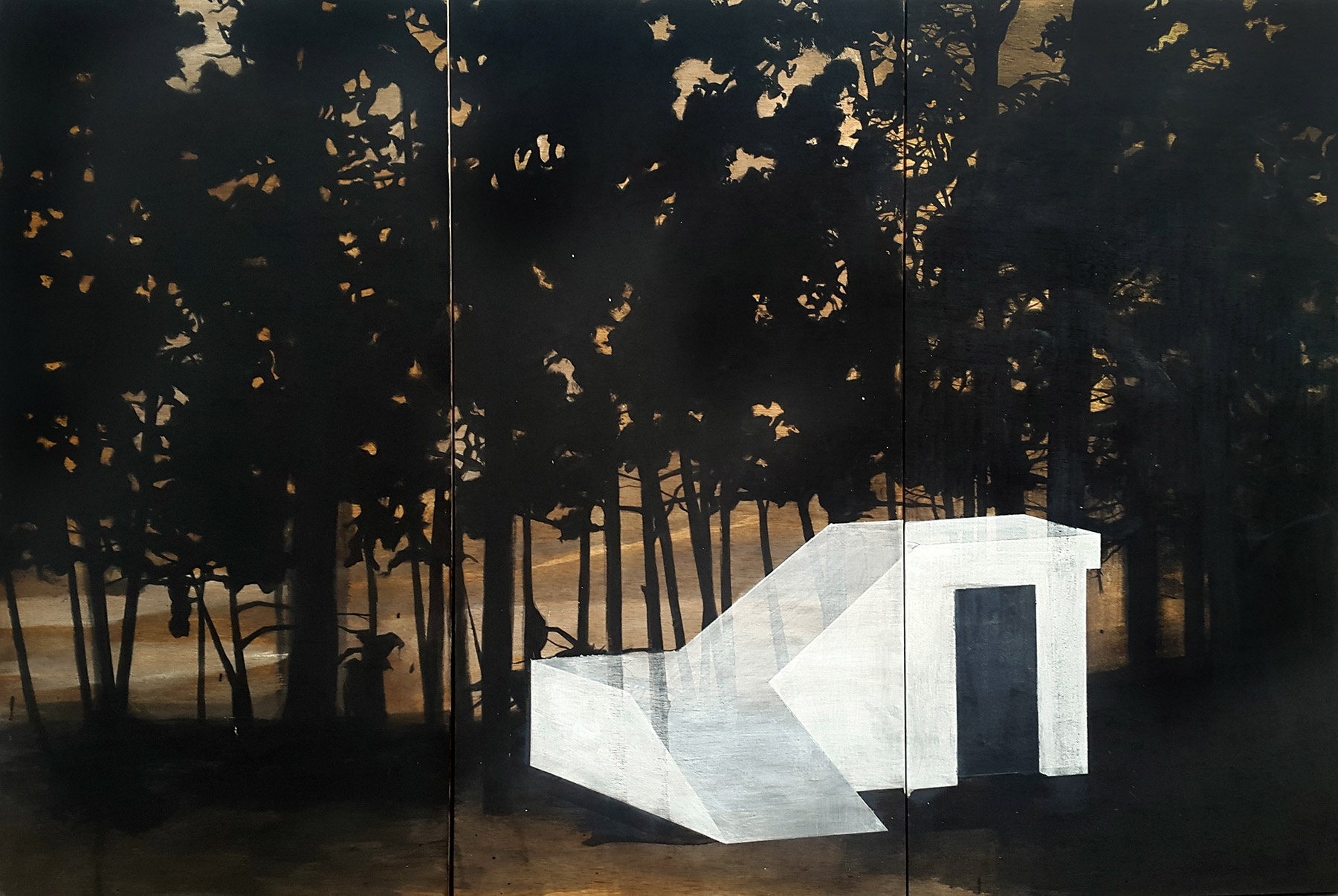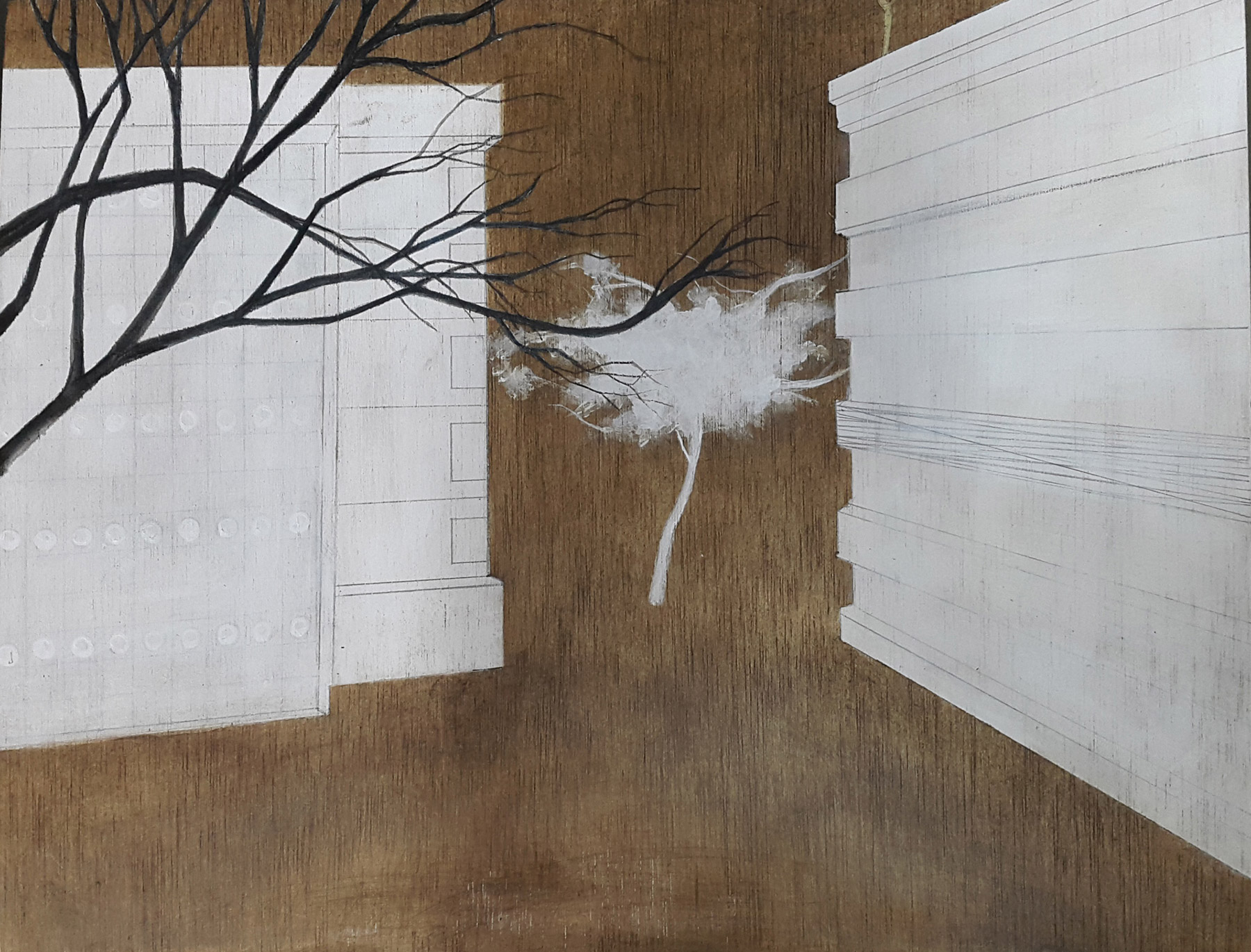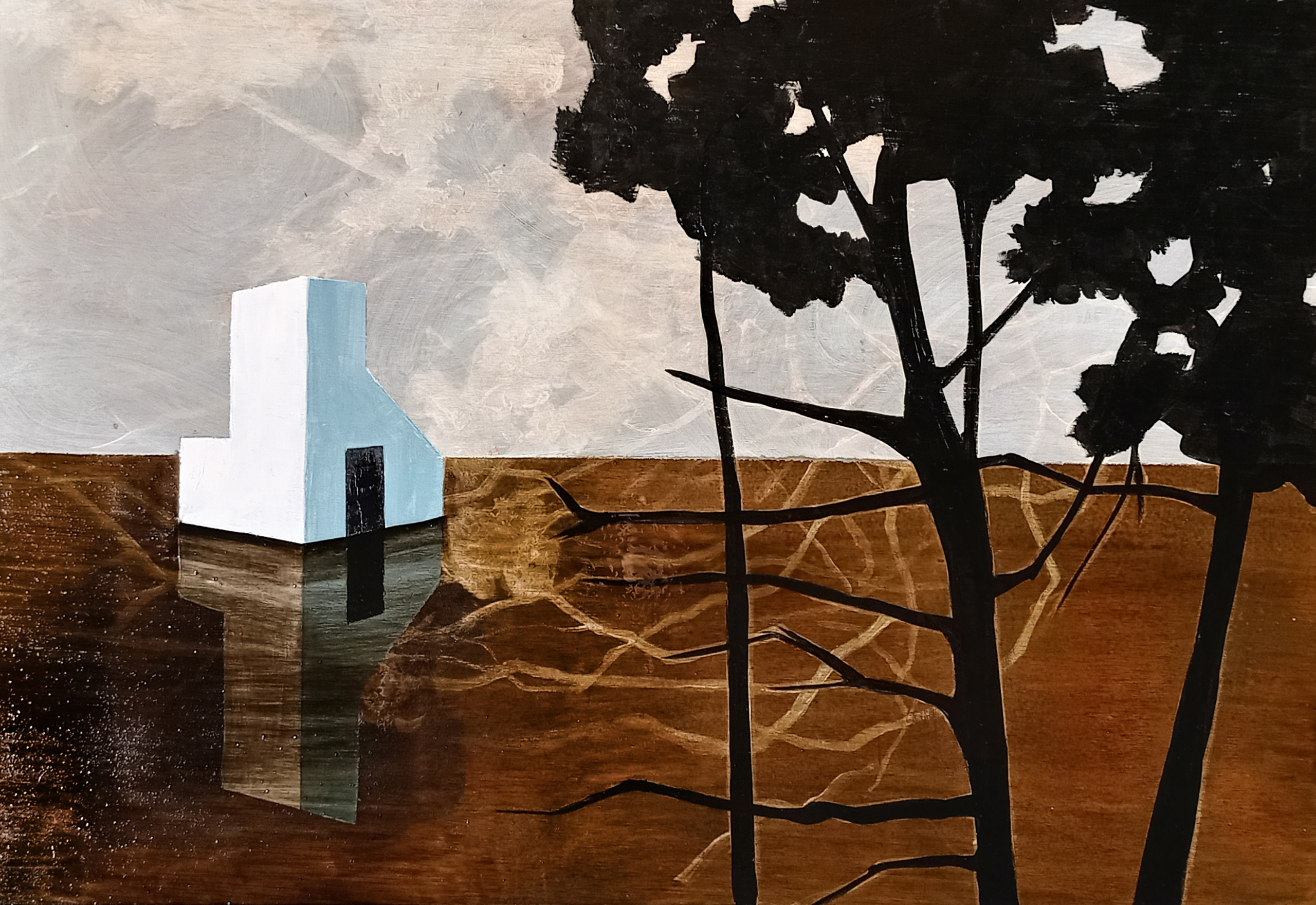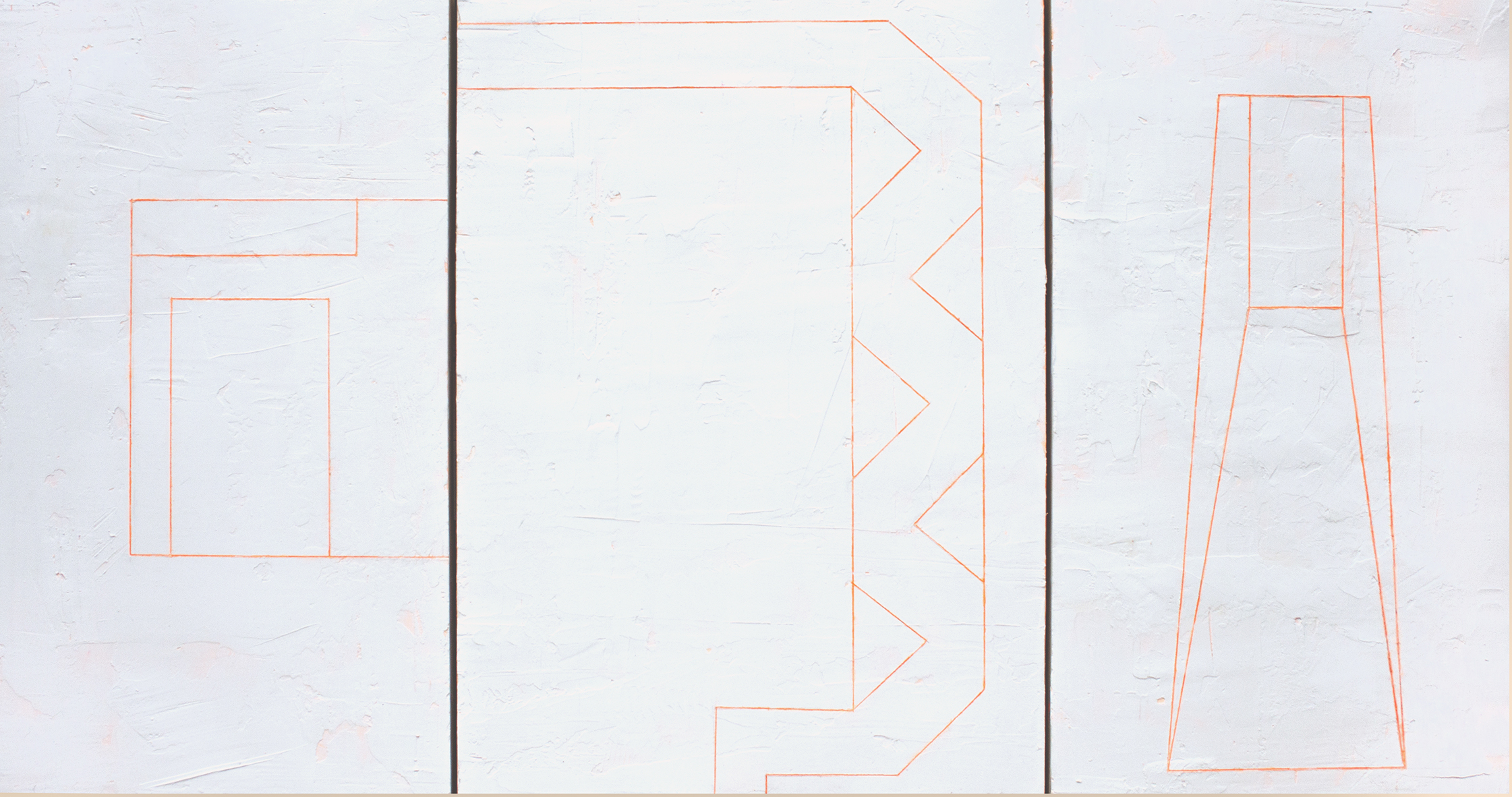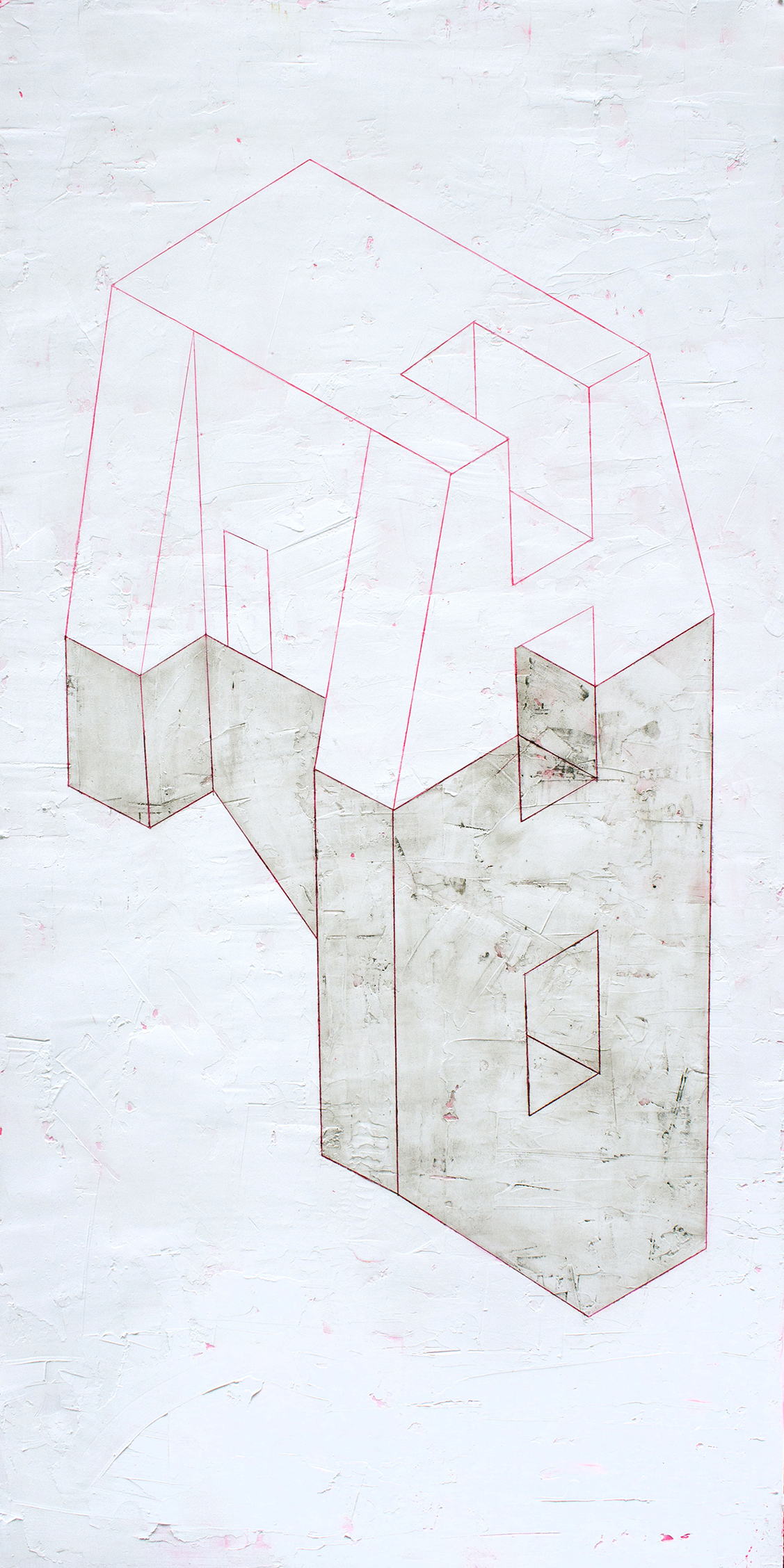The theme of “group identity” (understood as the way to cope with affinities and differences between people who occupy a limited space: the house, the neighborhood, the country), has always been present in my works. In the series Shelters I propose to explore the controversial forms that weave the identity of a city – in the sense of edges, borders, boundaries between different objects that coexist on the same surface. Thus, on a wooden support, I deliberately draw the silhouettes of the shelters with precision, presenting the concrete volumes as geometric figures cut out of an environment where the shelters fit like artificial prostheses. In my works, the shelters were de-territorialized, extracted from their original environment to relocate them to moors, wastelands, wastelands where they stand out for their eminent uselessness, thus highlighting an intrinsic feature that goes unnoticed in their place of origin.
Shelters have a double function: on the one hand, protect from the war conflict, offering a feeling of security and comfort that makes war more friendly and, on the other hand, remind us that catastrophe might wait us just around the corner.
